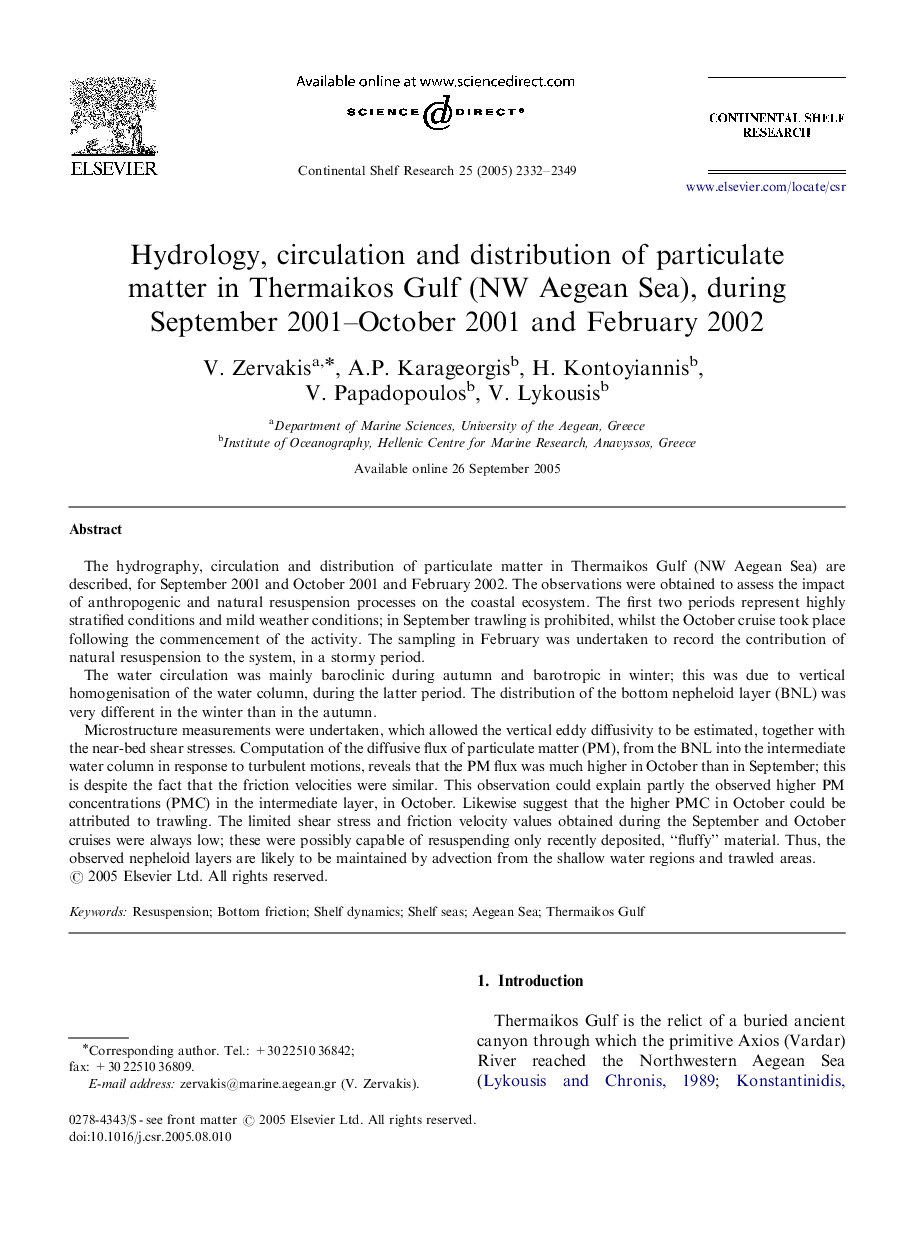| کد مقاله | کد نشریه | سال انتشار | مقاله انگلیسی | نسخه تمام متن |
|---|---|---|---|---|
| 4534107 | 1626192 | 2005 | 18 صفحه PDF | دانلود رایگان |

The hydrography, circulation and distribution of particulate matter in Thermaikos Gulf (NW Aegean Sea) are described, for September 2001 and October 2001 and February 2002. The observations were obtained to assess the impact of anthropogenic and natural resuspension processes on the coastal ecosystem. The first two periods represent highly stratified conditions and mild weather conditions; in September trawling is prohibited, whilst the October cruise took place following the commencement of the activity. The sampling in February was undertaken to record the contribution of natural resuspension to the system, in a stormy period.The water circulation was mainly baroclinic during autumn and barotropic in winter; this was due to vertical homogenisation of the water column, during the latter period. The distribution of the bottom nepheloid layer (BNL) was very different in the winter than in the autumn.Microstructure measurements were undertaken, which allowed the vertical eddy diffusivity to be estimated, together with the near-bed shear stresses. Computation of the diffusive flux of particulate matter (PM), from the BNL into the intermediate water column in response to turbulent motions, reveals that the PM flux was much higher in October than in September; this is despite the fact that the friction velocities were similar. This observation could explain partly the observed higher PM concentrations (PMC) in the intermediate layer, in October. Likewise suggest that the higher PMC in October could be attributed to trawling. The limited shear stress and friction velocity values obtained during the September and October cruises were always low; these were possibly capable of resuspending only recently deposited, “fluffy” material. Thus, the observed nepheloid layers are likely to be maintained by advection from the shallow water regions and trawled areas.
Journal: Continental Shelf Research - Volume 25, Issues 19–20, December 2005, Pages 2332–2349